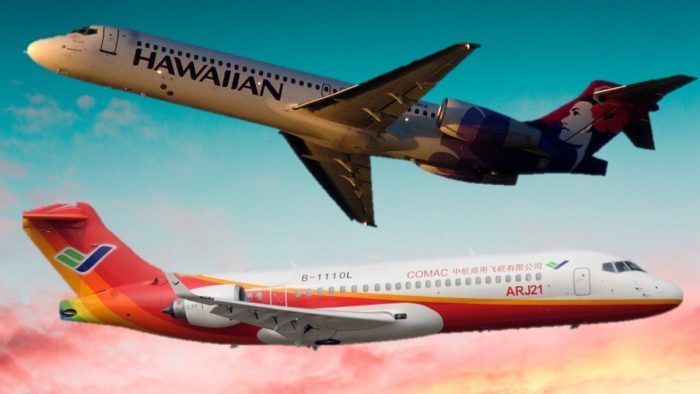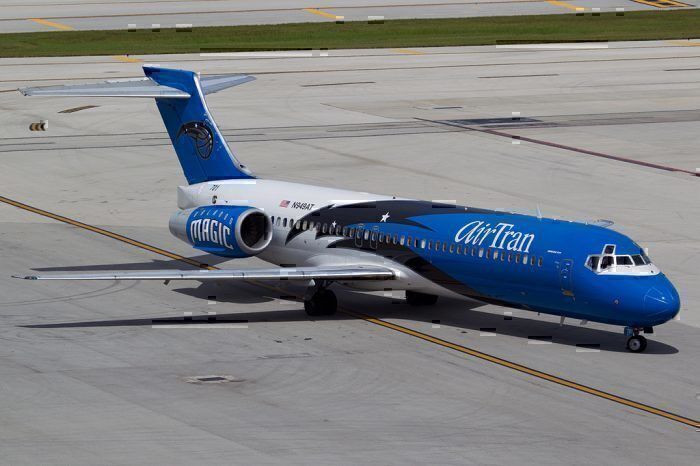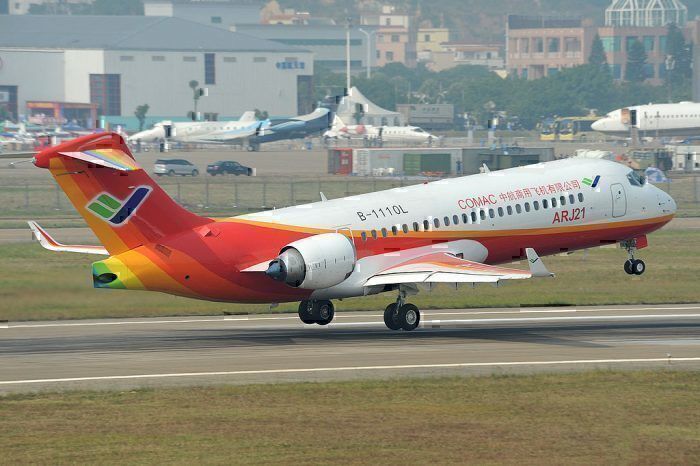With COMAC soon to bring the new ARJ12 to the market in some shape or form, one can't help but draw comparisons to Boeing's original regional jet attempt, the Boeing 717, back in the late 90s. How does the COMAC version compare? Let's find out
Why are we comparing these two aircraft?
COMAC, the Commercial Aircraft Corporation of China, has been racing to develop a portfolio of commercial passenger aircraft to match the likes of Boeing and Airbus. In their current range, they are looking at two distinct markets. A 200-seater C919 to match the Boeing 737 and Airbus A320 and the ARJ21, a 100-seater aircraft built to take on the A220 and Embraer E-Jet markets.
We have already covered how the ARJ21 compares to a modern 100-seater aircraft (The A220), but perhaps a more fair comparison would be how it matches Boeing's first attempt at the 100-seater market back in the day; the Boeing 717.
There are actually two versions of the ARJ21; a 90-seater ARJ21-700, and a 105-seater ARJ21-900. We will use the latter model for comparison, as it better matches the capability of the Boeing 717. Regarding the 717-200 variants, there was actually an improved engine design version that significantly increased the range. We will be using this model for the comparison also.
COMAC ARJ21-900 vs Boeing 717
Here are the raw stats side by side.
|
Variant |
717-200 HGW |
ARJ21-900 ER |
|
Cockpit crew |
Two |
Two |
|
2-class seating |
106 (8J+98Y @36–32 in and 91–81 cm) |
98 (36 in and 32 in) |
|
1-class seating |
117Y@32 in (81 cm) |
31 in (105 cm) |
|
Cargo |
730 ft³ (20.7 m³) |
711ft³ (20.14 m3) |
|
Length |
124 ft 0 in (37.8 m) |
119 ft 3 in (36.35 m) |
|
Wingspan |
93 ft 4 in (28.4 m) |
89 ft 6 in (27.28 m) |
|
Height: |
29 ft 8 in (9.0 m) |
27 ft 8 in (8.44 m) |
|
Cabin width |
123.8in (314.5cm) |
10 ft 4 in (314cm) |
|
Max. takeoff: |
121,000 lb (54,884 kg) |
104,019 lb (47,182 kg) |
|
Empty weight: |
68,500 lb (31,071 kg) |
59,020 lb (26,770 kg) |
|
Fuel weight: |
29,500 lb (13,382 kg) |
22,897 lb (10,386 kg) |
|
Turbofans (2×) |
Rolls Royce BR715-C1-30 |
General Electric CF34-10A |
|
Thrust (2×) |
21,430 lbf (95.3 kN) |
18,500 lbf (82 kN) |
|
Ceiling |
37,000 ft (11,000 m) |
39,000 ft (11,900 m) |
|
Cruise (34,200 ft) |
Mach 0.77 (822 km/h; 444 kn) |
Mach 0.78 (828 km/h, 447 kn) |
|
Range |
2,060 nmi (3,815 km) |
1,800 nmi (3,300 km) |
Passengers
Looking at the passenger numbers, we can see that the default Boeing 717 carries more passengers onboard than the ARJ21. This is likely due to the longer length of the aircraft, Boeing simply has more room to put in more seats.
Winner: Boeing 717
Range
Looking at the range of the two aircraft, we can see that the ARJ21 ER actually beats the Boeing 717 at an extra 40 nautical miles (NMI / NM). This really isn't a big distance and is a testament to an aircraft design from 30 years ago beating a modern creation. I'd be reluctant to award victory to the ARJ21 as it barely beats a plane that doesn't have the benefit of modern technology (You can see how the ARJ21 compares to a real modern aircraft here).
It's also worth pointing out that the normal ARJ21-900 (not the extended range version) only has a range of 1,800 nautical miles
Winner: ARJ21 ER
Which is best?
To try and choose between an aircraft built in the late nineties to one today might seem a bit unfair, but both Boeing and COMAC were at the same stages of their product development when these two aircraft hit their respective markets.
Will the ARJ21 sink or swim? Will it find a place in the market? Only time will tell.
What do you think? Which aircraft is best? Let us know in the comments.




